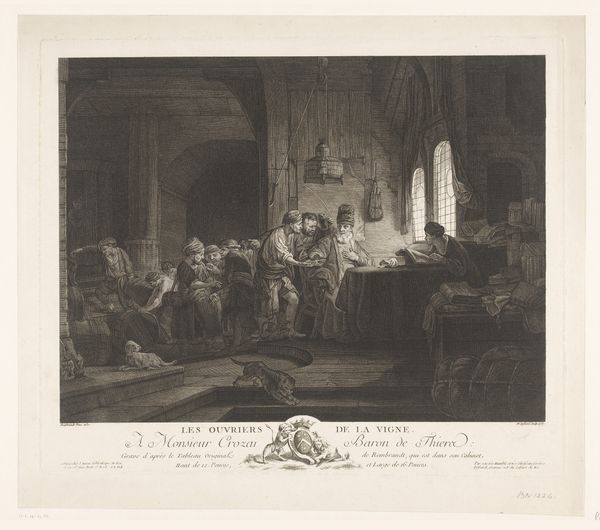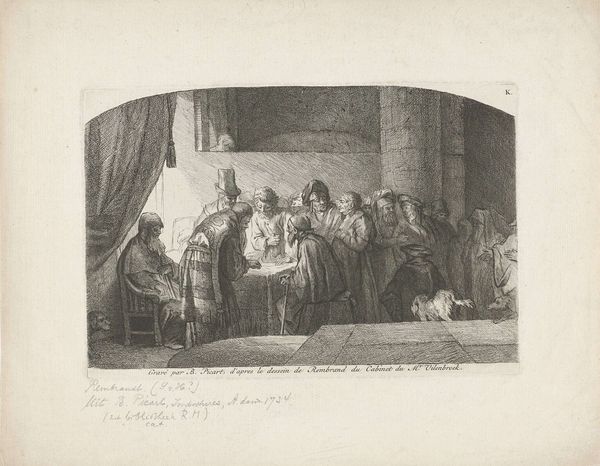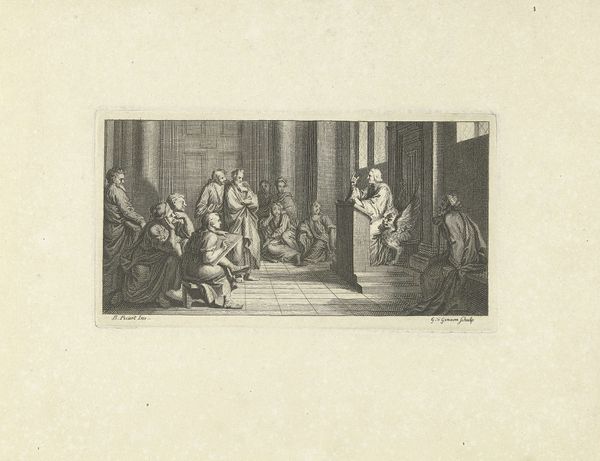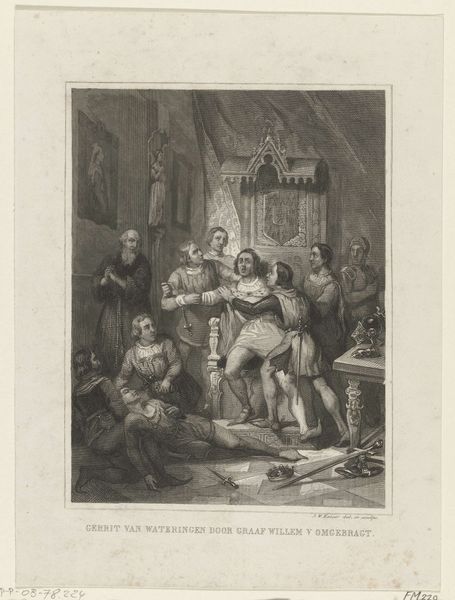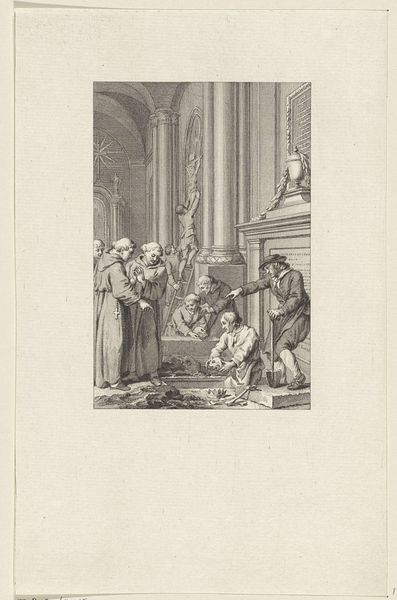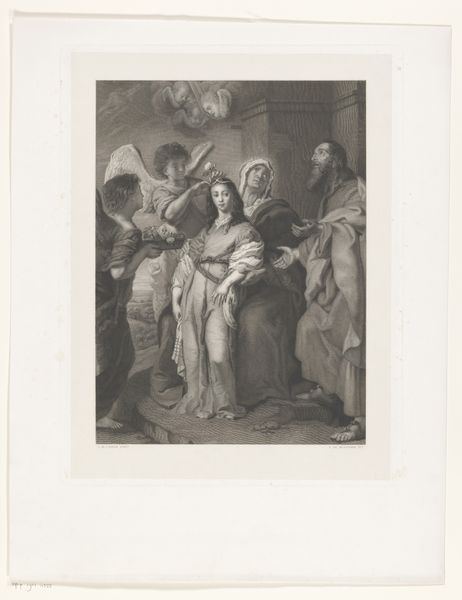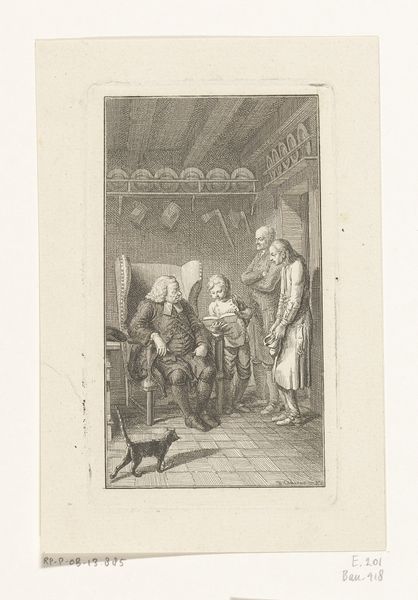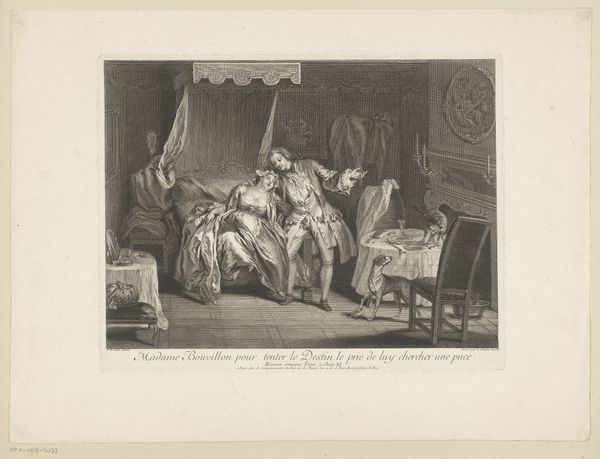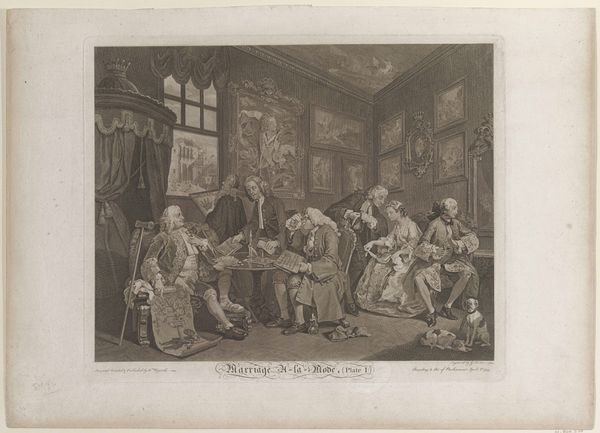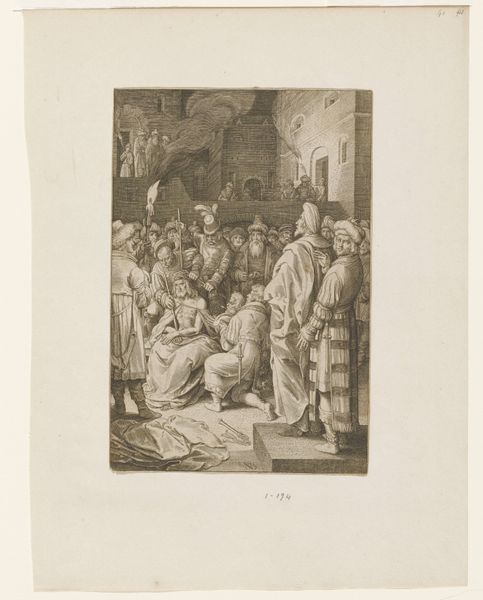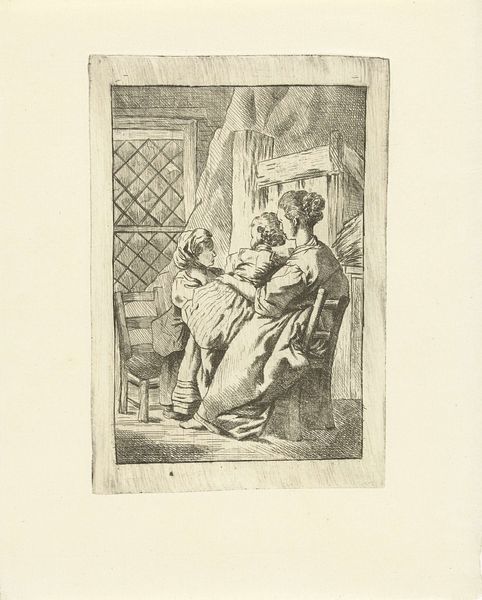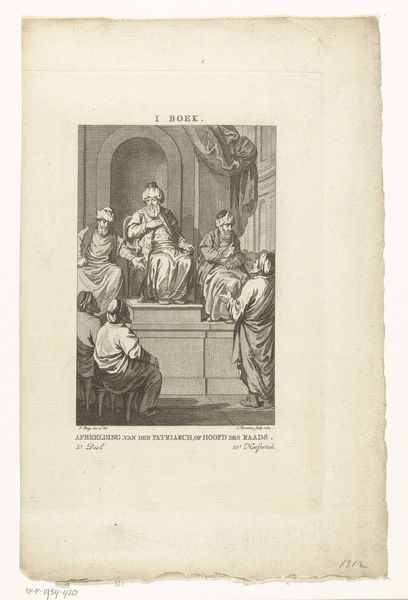
Contest for the Prize for a Study of the Head and Expression 1763
0:00
0:00
print, etching, engraving
#
aged paper
#
toned paper
#
light pencil work
#
yellowing background
#
photo restoration
# print
#
french
#
etching
#
france
#
history-painting
#
academic-art
#
engraving
#
rococo
Dimensions: 9 1/8 x 11 1/8 in. (23.18 x 28.26 cm) (plate)11 3/8 x 12 7/8 in. (28.89 x 32.7 cm) (sheet)
Copyright: Public Domain
Curator: This is Jean Jacques Flipart’s "Contest for the Prize for a Study of the Head and Expression," made in 1763. It resides here at the Minneapolis Institute of Art. Editor: It’s quite a scene! Immediately, I’m struck by the setting: an academic environment buzzing with focused energy. It almost feels voyeuristic, like we're peeking in on this exclusive contest. Curator: Exactly. Consider how engravings and etchings, as relatively accessible forms of printmaking, disseminated such images and the values they represented across 18th-century French society. This wasn't just art; it was cultural capital, circulated through the market. Editor: Absolutely. I’m intrigued by the production process here—etching allowed for multiple copies, each carrying this specific composition… But, what was the actual labor involved? What kind of paper, inks and printing press were used? Did all these factors play into the overall reception and valuation of such work? Curator: A point well-taken. Let's observe the layout further; notice how the depicted academy’s space is a carefully constructed hierarchy, where the central female figure, probably a model for these students, sits on high and the observers, with comte de Caylus also present, on the right, overseeing aspiring artists feverishly sketching below. The artwork highlights a certain class dynamic inherent to these institutions. Editor: I find it fascinating that the woman seated acts not as an artwork of art but as the *material* out of which other artworks are produced. And these budding artists – note their focused expressions! Their labor here reflects a highly controlled creative and cultural process with, I’d venture to say, specific consequences to society. Curator: Definitely. It prompts us to think about who has the power to shape taste and who's being left out of these narratives. The etching becomes an artifact, pointing to an exclusive artistic meritocracy as the source of good artistic taste. Editor: For me, tracing such networks helps to connect our understanding of Flipart’s engraving to the institutions it helped solidify, thus granting these places like Académie Royale greater control in solidifying its cultural dominance. It's a testament to how art not only reflects but also actively participates in shaping socio-political landscapes. Curator: Looking at "Contest for the Prize" reveals just how intricate the connections were between artistic production, pedagogy, and power. Editor: Right, now it’s a question of interrogating these power dynamics that helped produce art then – and continue to do so today!
Comments
No comments
Be the first to comment and join the conversation on the ultimate creative platform.
